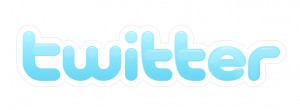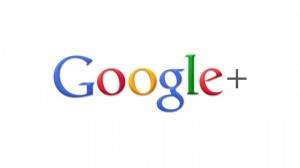I attended a networking lunch yesterday run by Millipod (coincidently, the venue was a client of mine, Iffin Farmhouse ). I try to get to two or three networking events a month if possible, partly because they’re a great way to raise the awareness of one’s business, but also because it’s nice to step away from a keyboard from time to time and meet real people!
The format of this particular networking event is very relaxed. We are always served a lovely lunch by Sarah, the host. Then everyone round the table has the opportunity to talk for a few minutes about their business and what they hope to get out of the meeting. Most often it’s leads for potential customers, but not always. For instance yesterday we had a local social enterprise, Kent Creative Arts, looking for sponsorship for their Support 365 event.
Before lunch and the more formal side of the event, there is the inevitable milling around chatting to people about anything from business issues to their plans for the Christmas period. Yesterday this evolved into a group discussion about social media, which seems to be a recurring topic at these meetings. And whilst most of the people around the table use social media to some extent, there seemed to be a lot of confusion over which ones to focus on.
During my 5 minute spiel I focussed on this rather than the more general overview of what I do, but it’s difficult to get everything across in such a short period of time, so I thought a blog post or two would be useful. Even this will need to gloss over much of the topic, but hopefully it will help put everything in context.
Which social networks can I use?
I think most people these days are aware of a few social media networks, probably Facebook and Twitter would be recognisable to most. However, in addition to those two, there are a couple more that I believe should be considered too. I tend to stick to the four below, as I think they have the biggest impact, but there are many others.
 The lumbering elephant of all social networks, with an estimated 800m users. Facebook started as a means of linking friends together, but has grown over the years to include business presence (through ‘pages’) and more recently allow ‘subscriptions’ to an individual’s updates so that you don’t need to be their friend. It has high adoption in the consumer market compared to other networks.
The lumbering elephant of all social networks, with an estimated 800m users. Facebook started as a means of linking friends together, but has grown over the years to include business presence (through ‘pages’) and more recently allow ‘subscriptions’ to an individual’s updates so that you don’t need to be their friend. It has high adoption in the consumer market compared to other networks.
 Unlike Facebook, LinkedIn started as a means of connecting business people to colleagues, and continues to concentrate in that area. It has something in the region of 100m users. As well as allowing direct contact between individuals, it utilises groups to allow those with similar interests to connect with each other. It can also be a good way of publicising events and advertising vacancies.
Unlike Facebook, LinkedIn started as a means of connecting business people to colleagues, and continues to concentrate in that area. It has something in the region of 100m users. As well as allowing direct contact between individuals, it utilises groups to allow those with similar interests to connect with each other. It can also be a good way of publicising events and advertising vacancies.
 Twitter is a bit like the marmite of the social media world, many people love it (200m at the latest count), but many really don’t get it. Its model is very different to most others, unless you count SMS as a social network. The basic premise is that you can create messages up to 140 characters long, and these are visible to anyone who ‘follows’ you (i.e. connects to you as a contact). There are ways of sending a message just to one or more people, and of sending ‘private’ message to an individual too. The goal for most business people is to have their ‘tweet’ forwarded on by the people following you so that their followers see it too – And that’s about it. It tends to work best as a means of signposting people to content on your site, using a shortened URL service like bit.ly to make sure the message fits in that restrictive character limit. But there are other ways in which a creative person can use twitter too (e.g. re-tweet this message to be entered in our prize draw).
Twitter is a bit like the marmite of the social media world, many people love it (200m at the latest count), but many really don’t get it. Its model is very different to most others, unless you count SMS as a social network. The basic premise is that you can create messages up to 140 characters long, and these are visible to anyone who ‘follows’ you (i.e. connects to you as a contact). There are ways of sending a message just to one or more people, and of sending ‘private’ message to an individual too. The goal for most business people is to have their ‘tweet’ forwarded on by the people following you so that their followers see it too – And that’s about it. It tends to work best as a means of signposting people to content on your site, using a shortened URL service like bit.ly to make sure the message fits in that restrictive character limit. But there are other ways in which a creative person can use twitter too (e.g. re-tweet this message to be entered in our prize draw).
Google+
 The new kid on the block, its growth rate has been very impressive, reaching 50m users in a matter of months and causing rivals, particularly Facebook, to sit up and take note. G+ is in its infancy, and it’s still difficult to know exactly what type of audience will be drawn to it. During the restricted beta phase it was mainly geeks that were interested, but since it was opened to the public Google seem to have been concentrating on particular vertical markets to gain market share. Thus the preponderance of photographers early on, highlighting Google’s efforts to make G+ a great platform for them to showcase their wares. G+ uses ‘circles’ to link people together, basically allowing you to subscribe to someone else’s feed without them having to ‘friend’ you. Another feature unique in the social media sphere is the video ‘Hangouts’ allowing up to 9 people to engage in a video chat session. Given Google’s continued dominance in the search engine arena, it’s pretty safe to assume that G+ content is going to rate quit highly in SEO terms too.
The new kid on the block, its growth rate has been very impressive, reaching 50m users in a matter of months and causing rivals, particularly Facebook, to sit up and take note. G+ is in its infancy, and it’s still difficult to know exactly what type of audience will be drawn to it. During the restricted beta phase it was mainly geeks that were interested, but since it was opened to the public Google seem to have been concentrating on particular vertical markets to gain market share. Thus the preponderance of photographers early on, highlighting Google’s efforts to make G+ a great platform for them to showcase their wares. G+ uses ‘circles’ to link people together, basically allowing you to subscribe to someone else’s feed without them having to ‘friend’ you. Another feature unique in the social media sphere is the video ‘Hangouts’ allowing up to 9 people to engage in a video chat session. Given Google’s continued dominance in the search engine arena, it’s pretty safe to assume that G+ content is going to rate quit highly in SEO terms too.
So that’s an overview of the four social networks that I would recommend every client to consider using in order to reach out to existing and potential clients. Not every client should use every network, as their particular needs and target market will drive that decision. However, it’s rare these days to find a business that will not benefit from using social media.
Coming in part 2 – How to choose the right social network for your business.

Recent comments